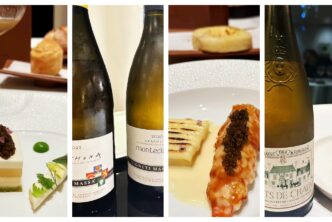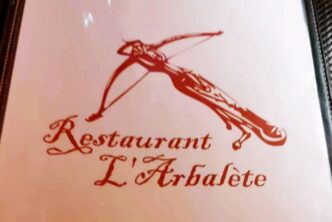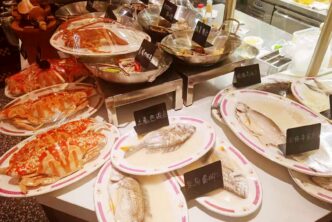Pappas Bros. Steakhouse
5839 Westheimer Road
Houston
77057 Texas
Tel. 001-713-780-7352
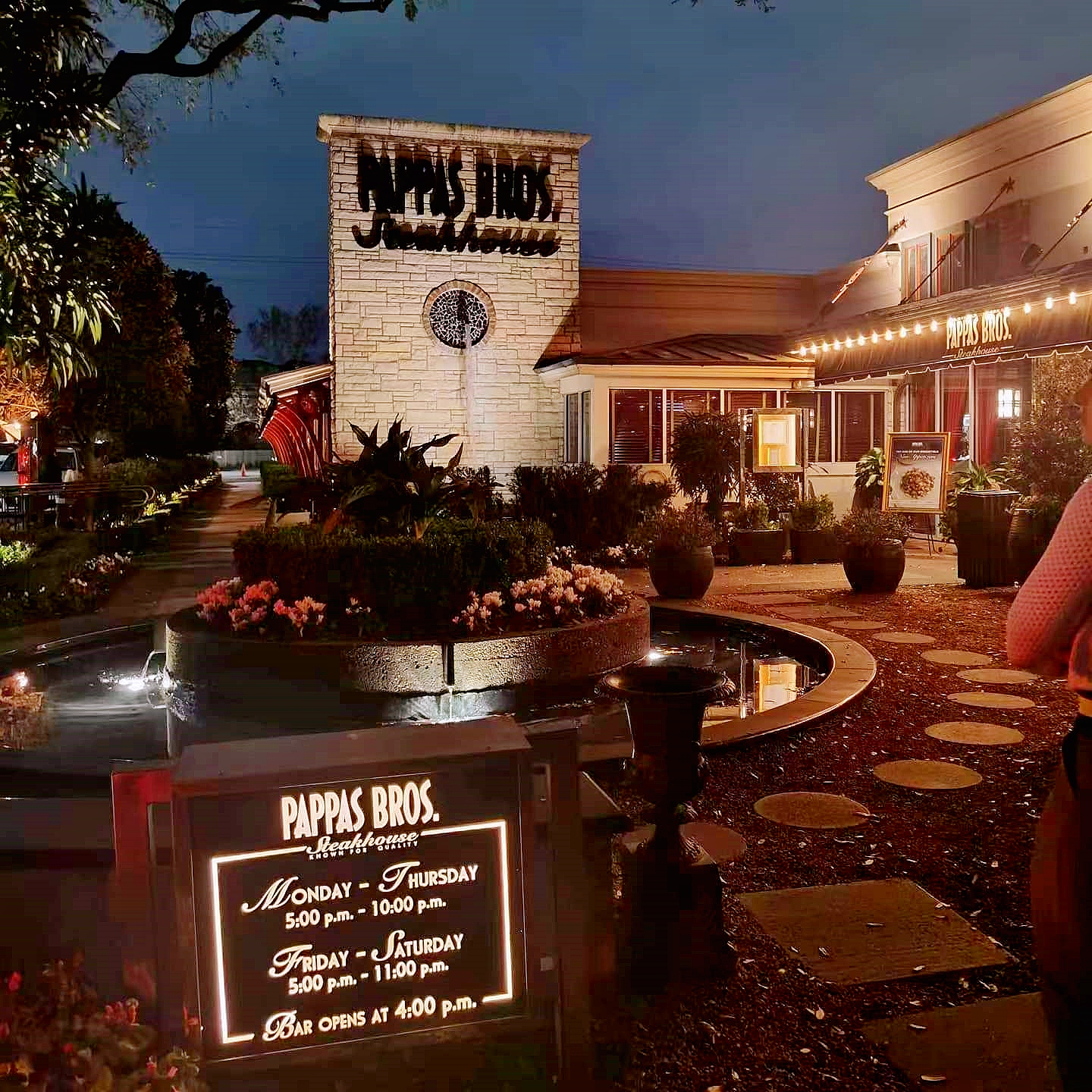
The dishes
Spanish octopus carpaccio
Beefsteak tomatoes and onions
Turtle gumbo with aged Sherry
Prime New York Strip, 14 oz.
Prime Ribeye, 16 oz.
Roasted mushrooms
Onion rings
Fresh jumbo asparagus
PS Signature gooey pecan pie (served warm, with vanilla ice cream)
Key lime pie (whipped cream, graham cracker, and salted pecan crust
The wines
Domaine Guiberteau 2015 Saumur Brèze 93
Brendan Stater West 2015 Saumur Les Chaupadaises Loire 92
Arnot-Roberts 2013 Syrah Que Syrah Vineyard Sonoma Coast California 94
D’Oliveiras 1977 Madeira Sercial 96
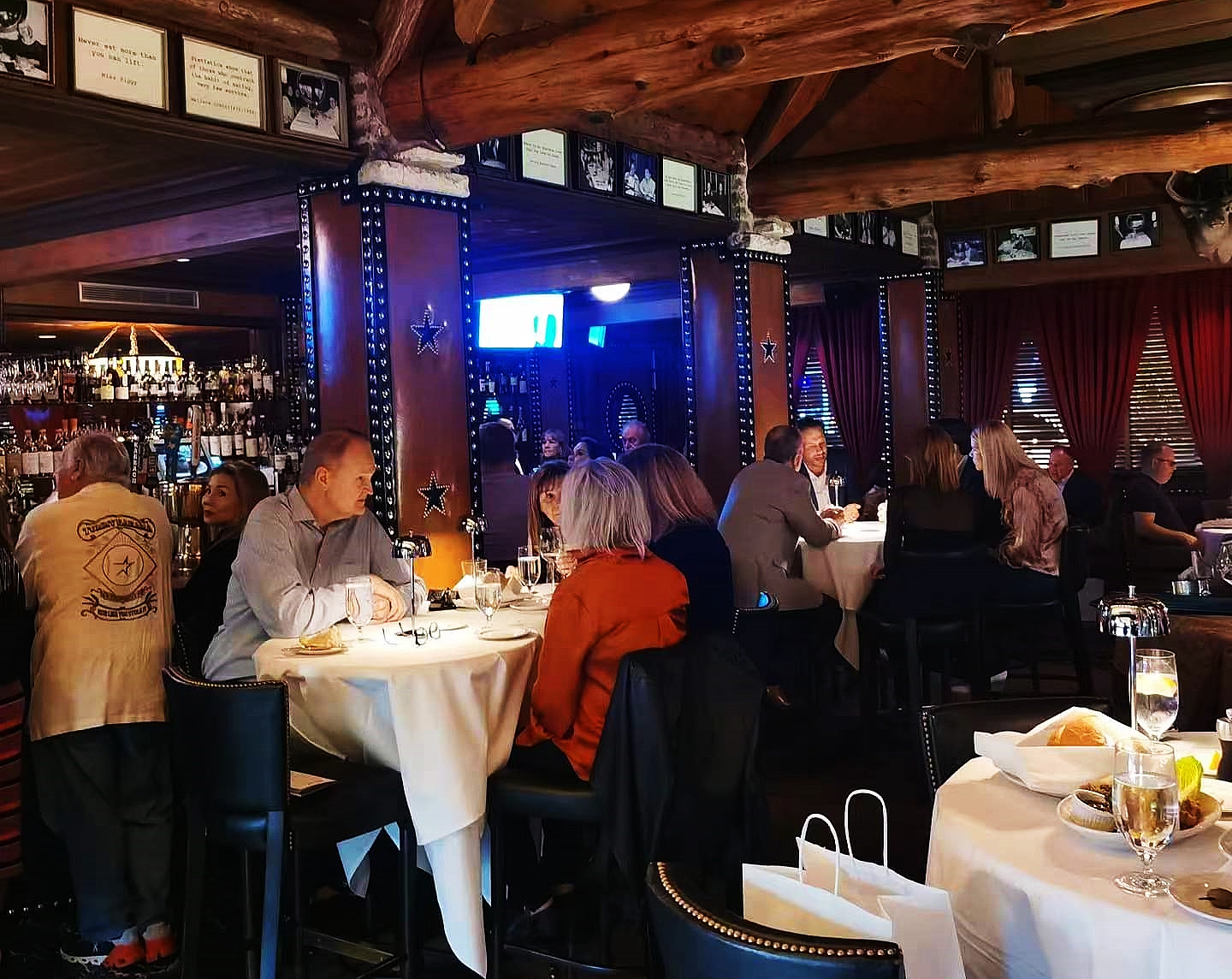
The Pappas Bros. Steakhouse in Houston (there is more than one) that I just dined in recently was opened in 1995 but the Pappas Bros. dining dynasty traces its roots to much earlier times.
H.D. Pappas, the grandfather of sibling duo Chris and Harris Pappas (the current owners of Pappas Bros. Steakhouse and a bunch more dining establishments) arrived in the United States in 1897. His idea to create a restaurant in which good food and service were the main focuses proved a winning one since the first day. His success was such he was soon able to open dining establishments in Arkansas, Tennessee and Texas. His sons, Pete and Jim, while remaining in the restaurant world, followed a slightly different path, entering the restaurant equipment and supply business, opening Pappas Refrigeration in 1945. It was H.D.’s aforementioned grandsons who first opened a restaurant again (in 1976), and by so doing brought the Pappas family back to doing what the forerunner had started. Much like their grandfather, the siblings have enjoyed runaway success, and are now at the helm of what can be reasonably termed a Pappas Bros. “dining empire”, given the over eighty locations in seven U.S. states. The different restaurants include not just the Pappas Bros. Steakhouses but also Pappasito’s Cantina, Pappadeaux Seafood Kitchen, Pappas Burgers and still others, including catering services; restaurants can be found in Arizona, Colorado, Georgia, Illinois, New Mexico, Ohio, and Texas.
Without doubt, one of the strong suits of Pappas Bros. Steakhouse (at least at the Galleria location) is the waitstaff: these are some exceptionally well-trained young men and women, most of whom have been with the company for many years. They are a well-oiled machine that cares, and run things like clockwork. For example, in the late morning/early afternoon of the day I dined at the Pappas Bros. Steakhouse Galleria location, the interior space had been re-configurated so as to allow a series of masterclasses and a small wine salon with stands (about thirty wineries) to take place; but come the end of the wine show, it took the waitstaff all of a just a few minutes to smoothly and efficiently turn the restaurant back to its normal look and glory. A truly impressive performance.
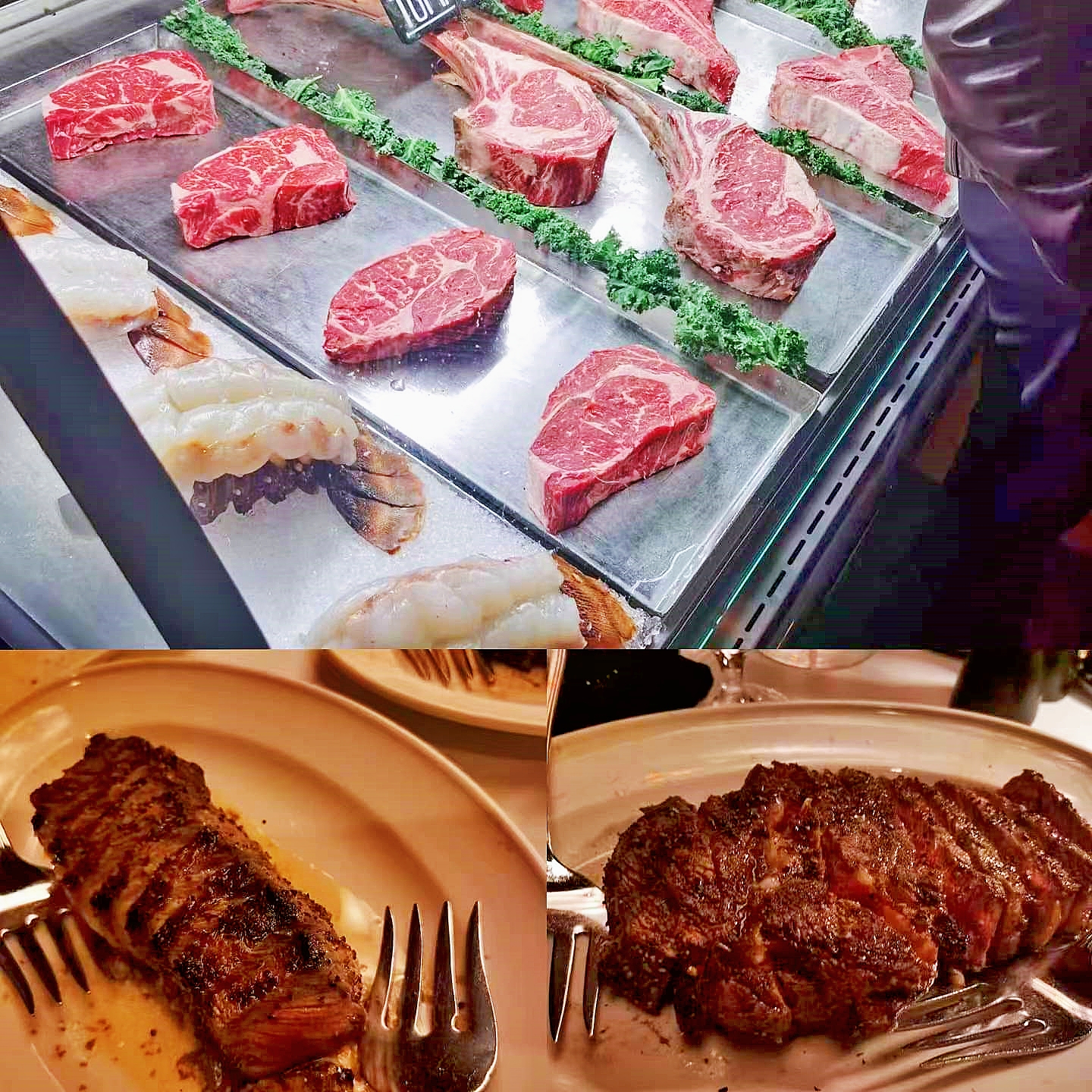
At Pappas Bros, they also make, own and operate everything that is needed to make sure patrons have the best dining experience possible. For example, the Pappas Bros. company directly employs the truckers who deliver the ingredients needed by the kitchen every day and the electricians who keep things singing along brightly. When the company decided they needed the best possible salmon for their menu, it quietly went out and bought a fish farm in New Zealand they liked and thought highly of. This management style (known as “vertical integration”) has led over the years to the company winning numerous accolades and awards, including “Top Five Steaks in America” from The Food Network, the “Top 5 Restaurant Wine Lists in Dallas” from the Wine Spectator, and “The Ten Best Steakhouses in Houston” from Thrillist.
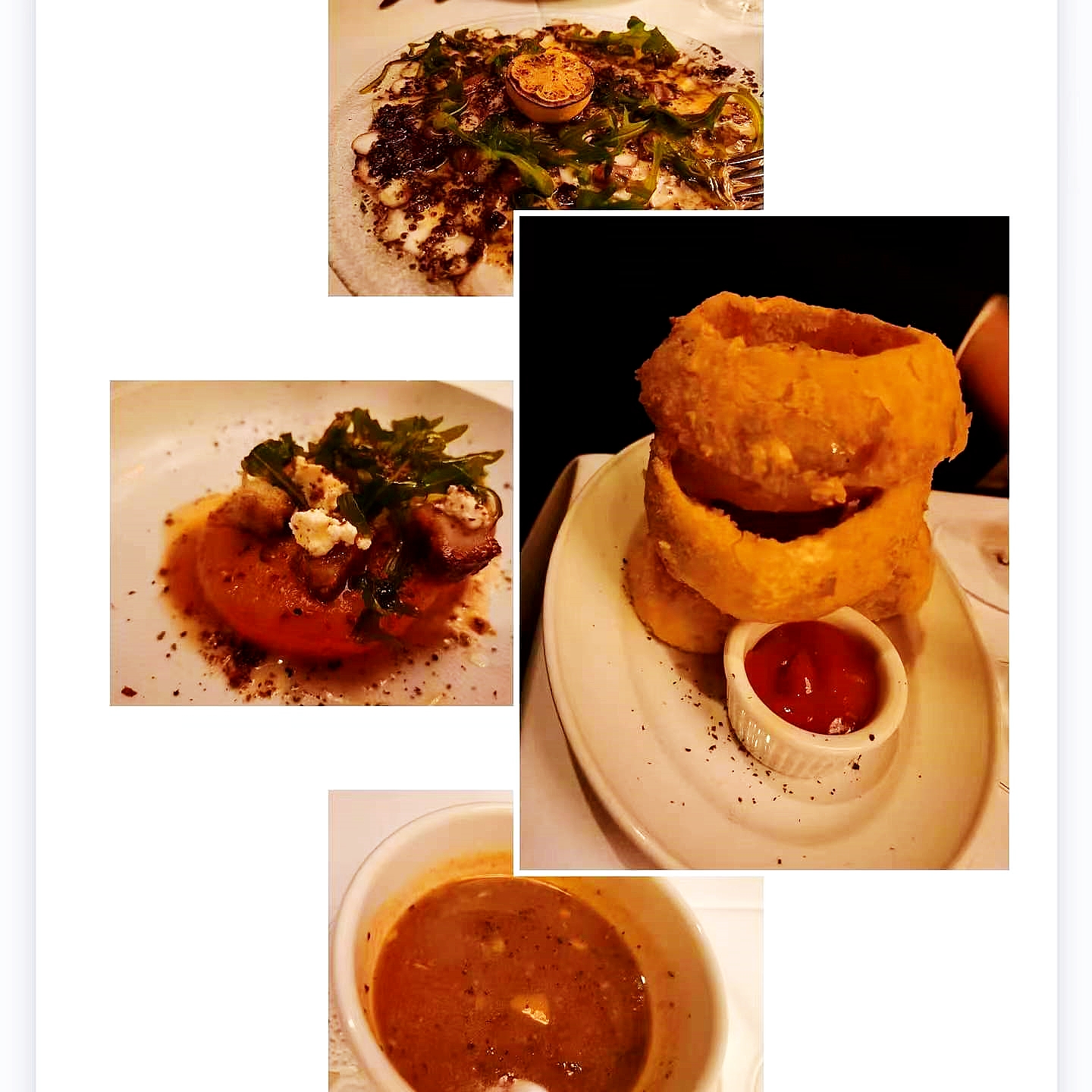
There are three Pappas Bros. Steakhouses currently in Texas, two in Houston and one in Dallas. The executive chef for the Galleria location where I dined recently is Chris Mata. His must-try dishes are reportedly the lobster deviled eggs, the ribeye steak, and the gooey pecan pie. Clearly, a steakhouse lives and dies on the reputation of its meat, and at Pappas Bros. they some of the best steaks around. They employ a very specific dry-aging process (written down in only three copies), but it all starts with sourcing all their beef from just two packers in the Midwest and using corn-fed beef and USDA prime graded cuts only. The meat is cut by butchers hired to do just that (so at Pappas Bros. they do not buy and serve pre-packaged, pre-portioned, cuts of beef), and dry-age it 28 days in house (so they do not buy it already dry-aged; furthermore, they serve various dry-aged cuts, and in so doing offer greater choice).
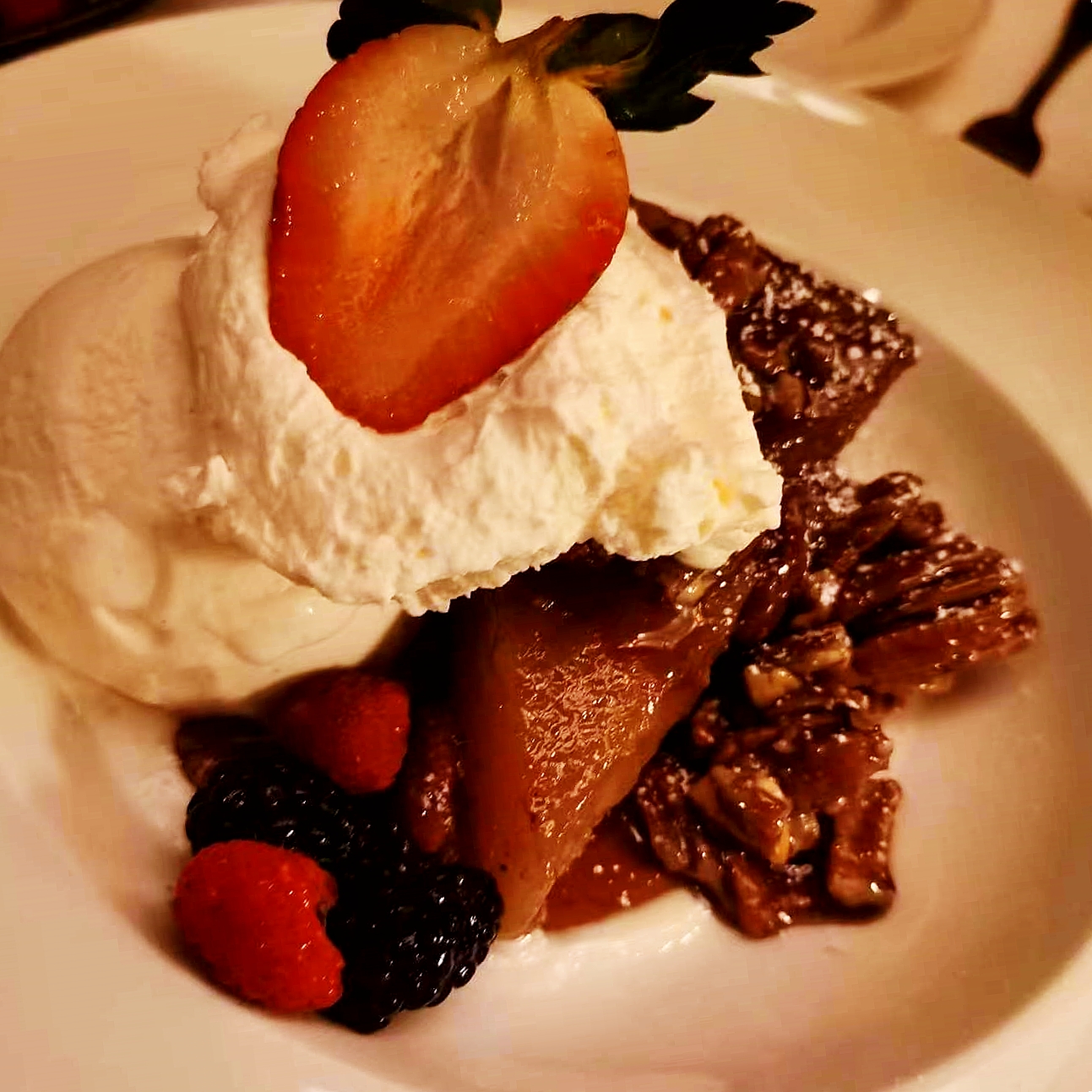
In truth, just about everything I ate during my dinner there was immensely satisfying and tasty. Portions aren’t small so make sure you come with an appetite. That is especially true if you like desserts. As they all look like small Everests on plates, if you have a sweet tooth, make sure you don’t eat too much before dinner or even during the dinner leading up to the dining ninth inning. The desserts at Pappas Bros. Steakhouse Galleria location are heavenly and you’ll regret being too full to do them justice (I know I certainly regretted it!), so you can’t say I didn’t warn you. All the dishes we tried during our dinner were more or less delicious. Highlights included the turtle gumbo (the Pappas Bros. rendition contains a little beef as well) was reminiscent of some of the standout turtle soups I have had from leading lights in New Orleans, so well done; the beefsteak tomato salad was actually a meal in itself, with dark red, very flavourful, thick tomatoes that literally were very much like digging into a steak. And the steaks were just what the doctor ordered: the New York Strip was compactly-textured, leaner and more straightforward in its taste profile, while the Ribeye proved nuttier, fattier and more flavourful. Both were excellent.
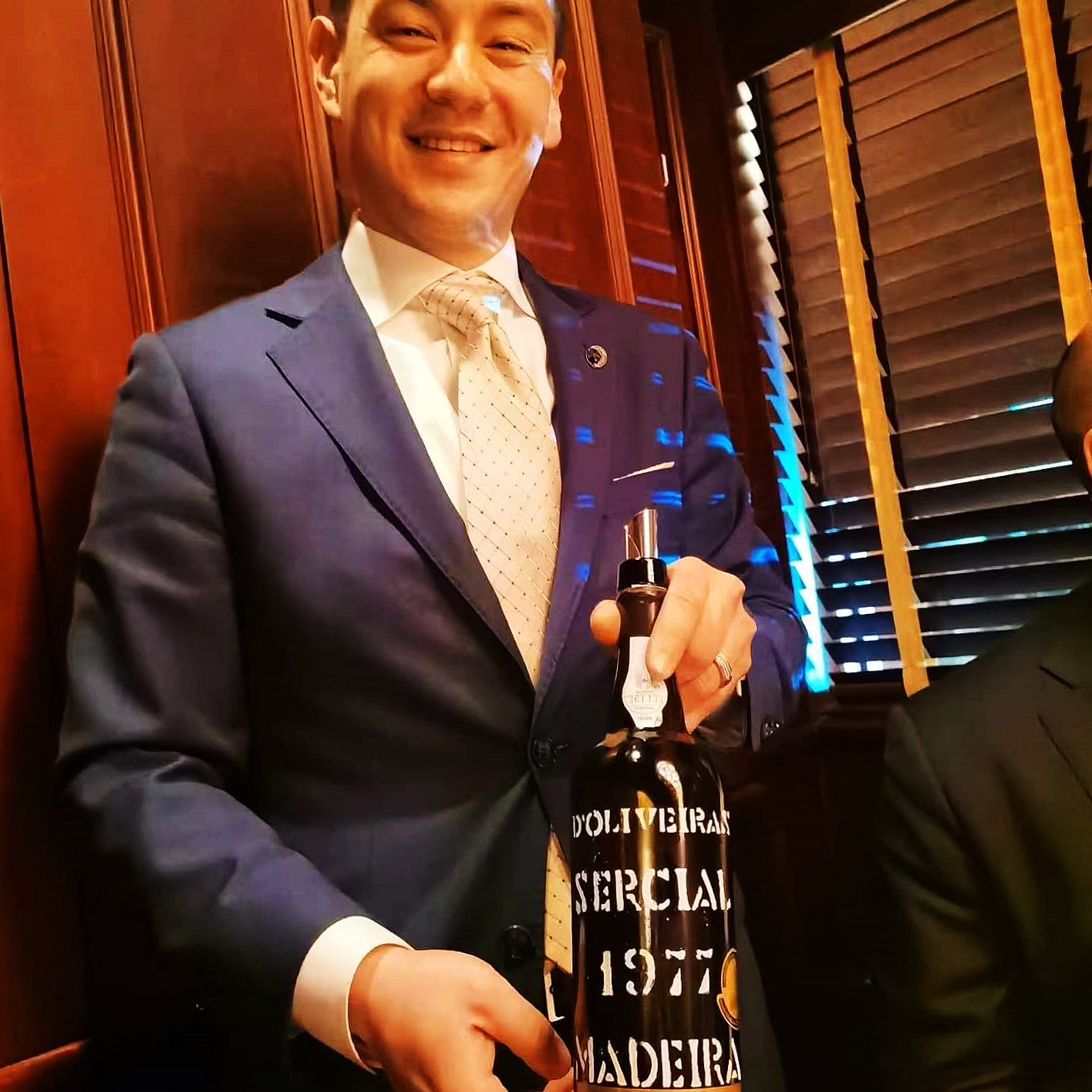
At Pappas Bros. Steakhouse, the “come with an appetite” advice refers to wine too. There is a wine director at the Galleria location, Chris Havens, and there are four other sommeliers that work full time. The one I interacted with the most was Jason Barnett, a very talented and likeable young man with quite the future in front of him. This setup is similar to how things are done at the other Pappas Bros. Steakhouse locations: there is a wine director at the downtown branch with two other full-time sommeliers. And there is a wine director in the Dallas branch with three other full-time sommeliers. That’s a total of twelve full-time wine employees for the steakhouse concept and that doesn’t even include the top dog, Steven Macdonald MS, a Master Sommelier universally recognized as one of the brightest minds in American sommelierie, who oversees the whole Pappas Bros. Steakhouse wine program as the Executive Wine Director working closely with his team members. I have known Steve for many years now and I can vouch for his immense wealth of knowledge and his extremely humble, likeable delivery of it, as well as how much he is liked and admired by wine producers from all over the world. There are over 5,000 wine selections on the Galleria location wine list alone. The downtown location has approximately 3,000, and the Dallas location has approximately 4,000 selections. The focus is on quality wines from all over the world: understandably, names from California and France have the lion’s role, but at least at the Galleria location where I dined, the list of Champagne and Italian wines was outstanding as well.

The wines we’d drink on this night were left up to Jason Barnett, who was to intrigue us with his choices, and intrigue he did. The Saumurs paired very well with the asparagus and even the turtle gumbo, so those were spot-on choices. The two wines share an origin, so to speak, for young American Brendan Stater West “trained” at Domaine Guiberteau, one of the Loire’s and Chenin’s leading lights. The Domaine Guiberteau 2015 Saumur Brèze is a gem, made from exceptionally old vines (planted in 1933 and 1952) on sandy-clay soils and limestone bedrock, a vibrant Saumur that spent eighteen months on the lees in new and one to two years old barrels. Even the though the family has been involved in winemaking for over a hundred years, it is only three generations (Romain Guiberteau is at the helm now) that they have been bottling their own wines (wine lovers everywhere are glad they chose to do so). Similar in style and quality is the very promising and highly successful Brendan Stater West 2015 Saumur Les Chaupadaises Loire, the first vintage made by an American who had first travelled to France to teach English when the wine bug fatefully bit him (that’ll teach him). His Saumur is vertical, lemony and saline, with riper yellow melon notes as it warms on the finish. In short, all the good things you’d want and expect from a good dry Saumur blanc. The Arnot-Roberts 2013 Syrah Que Syrah Vineyard Sonoma Coast California is made in a cooler-climate part of the State and the wine boasts indeed a cooler, Northern Rhone sort of personality, but with aromas and flavours that are immediately recognizable as Syrah. I love the wine’s purity and precision, and usually score it 93-94; it’s just a gorgeous bottle of red. The WOTN, if I really had to pick one, was the D’Oliveiras 1977 Madeira Sercial, an absolute jewel of a wine and a joy to drink. I love Madeira, and it’s hard not to like everything D’Oliveiras does; this specific bottling, matured in oak casks until it was bottled in 2017, showcased very inviting aromas and flavours of dried apricot, figs, honey, cedar, dried ginger and caramel and truly noteworthy complexity, not to mention virtual ageless cellaring potential. Smooth and multilayered, it is one of the better wines I have had all year so far, and it brought a splendid night of fine wine, food and friendship to a perfect close.


 中文
中文
